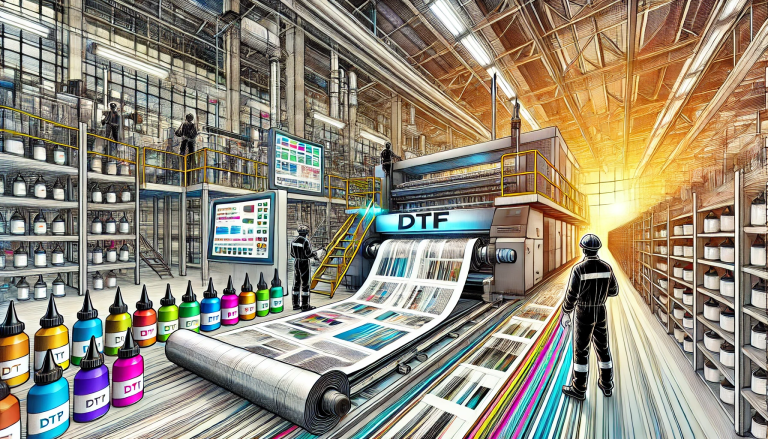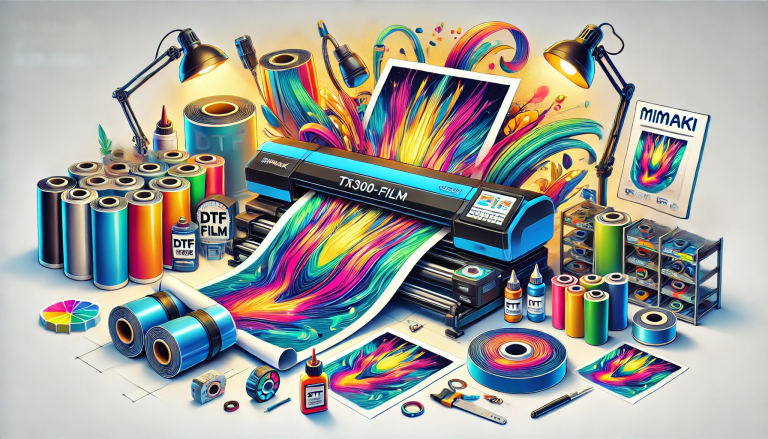“Is DTF (Direct to Film) Vinyl?” is a question that often arises in the context of modern printing technologies, especially among those engaged in the textile and apparel decoration industry. This article aims to explore the intricacies of DTF technology, compare it with traditional vinyl methods, and assess its position and significance in the current market.
Direct to Film (DTF) printing is a relatively new technology that has rapidly gained popularity for its versatility and efficiency in producing high-quality prints on a variety of fabrics. Unlike traditional vinyl, which requires cutting and weeding processes, DTF printing involves printing a design directly onto a special film, which is then transferred onto the fabric using heat and pressure. This process eliminates the need for cutting and weeding, making it easier and faster to produce detailed and colorful designs.
At its core, DTF technology is distinct from vinyl in several key ways. Firstly, the process itself is different. Vinyl printing typically involves cutting out designs from colored vinyl sheets and then heat-pressing them onto the fabric. This method is well-suited for simple designs and text but becomes time-consuming and less efficient for more intricate or multicolored graphics. On the other hand, DTF prints the design onto a clear film in a full range of colors, including white ink, which acts as a base for other colors when transferred onto darker fabrics. This capability allows for much greater flexibility in design, color, and application.
The quality and feel of the final product also differ between these two methods. Vinyl prints tend to have a more pronounced texture and can sometimes feel stiff, affecting the overall comfort of the garment. DTF prints, however, are known for their softness and flexibility, making them more comfortable to wear and less likely to crack over time. This difference is particularly important for applications where comfort and durability are paramount, such as in athletic wear or children’s clothing.
Another significant advantage of DTF technology over traditional vinyl is its compatibility with a wide range of fabrics. Vinyl works best on cotton and polyester but can have adhesion issues with other materials. DTF, however, can be applied to virtually any type of fabric, including blends, which greatly expands its applicability in the fashion and textile industry.
From a sustainability perspective, DTF also offers some advantages. The process is generally considered to be more environmentally friendly than vinyl, as it produces less waste. Vinyl cutting generates excess material that must be weeded out and discarded, whereas DTF uses only the ink that is transferred to the garment. Additionally, the inks used in DTF printing are typically water-based, which is less harmful to the environment compared to the PVC material commonly used in vinyl.
Despite these advantages, it’s important to note that DTF technology may not be the best solution for every application. The initial setup costs for DTF printing can be higher than those for vinyl, making it less accessible for small-scale operations or individuals. Furthermore, the process requires specific equipment, such as a DTF printer and a heat press, which may represent a significant investment for businesses transitioning from traditional vinyl methods.
In conclusion, while DTF printing offers numerous benefits over traditional vinyl, including greater design flexibility, improved comfort, and environmental advantages, it may not completely replace vinyl in all contexts. The choice between DTF and vinyl ultimately depends on the specific needs of the project, including the complexity of the design, the type of fabric, and the scale of production. As the textile and apparel decoration industry continues to evolve, it’s likely that both DTF and vinyl will have their places, serving different needs and preferences within the market. The rise of DTF technology highlights the industry’s ongoing innovation and adaptation, striving to meet the demands of both consumers and producers in an ever-changing landscape.




